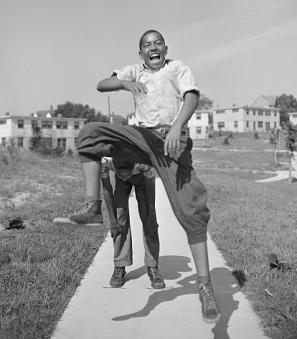D.C.'s Margaret Gorman Becomes the First Miss America
Most 16-year-old girls dream of being popular. And while some can claim to be the queen bees of their high schools, not many can maintain that they are the most popular girl in the country. In 1921, though, Margaret Gorman could. Fresh out of her junior year at Western High School (later the Duke Ellington School of the Arts) in Georgetown, Margaret went from being a regular teenager to the best-known girl in the nation when Atlantic City judges crowned her the first Miss America.
It all began in June of 1921 when Margaret decided, on a whim, to submit her photo to The Washington Herald’s popularity contest. She had previously been voted “The Most Beautiful Girl in Washington” in another local competition, and decided to test her luck with a different set of judges and the promise of a grander prize.[1] The Herald, along with seven other northeastern newspapers, had teamed up with the Businessmen’s League of Atlantic City to offer the winner a free trip to Atlantic City. There, she would compete in a beauty pageant of great renown that was intended to attract tourists past Labor Day, when the season usually closed.[2]
Throughout the summer of 1921, each Washington girl’s submitted photo was run with a caption in the Herald. Margaret, a favorite from early on, was described in sensational terms:
A photograph unfortunately gives no idea of her fine coloring, or rare charm. She has a wealth of golden hair, the bluest of blue eyes and fair skin. Miss Gorman stands well in her classes, has a charming manner and is a bright conversationalist.[3]
On August 28, judges – mostly the heads of affluent Washington societal organizations – selected six photographs from the thousands presented. These chosen girls, Margaret among them, were invited to the Italian garden of the Arts Club of Washington. They were inspected by the judges as they walked down a path and were interviewed as to their place of residence, education, ambition, and accomplishments.[4] Margaret outshone the rest. The following day, John Boucher, a reporter with the Herald, went to her house at 3515 Cambridge Place to tell her that she’d won. It was a viciously hot day, and when he arrived Margaret’s parents told him she could be found in a nearby park where it was cooler. Boucher said that “when [he] discovered her – the woman who, next month, would be declared ‘the most beautiful Bathing Girl in America’ – she was shooting marbles in the dirt.”[5]
Almost overnight, Margaret became a celebrity in Washington. With only about a week before the Atlantic City pageant on September 7-9, she was flooded with invitations to dinners with government officials, received free clothes from local businesses, and even traveled to the White House to meet President and Mrs. Harding.[6] When she arrived at Union Station on September 6 to board a train bound for Atlantic City, hundreds were there to wish their Miss Washington, D.C. good luck. But she wouldn’t need it.
Margaret was just as famous in Atlantic City as in Washington. Upon her arrival, she was greeted by another crowd that included the mayor and his wife. A rolling chair picked her, accompanied by her chaperon Mrs. Basil Manley (president of the Arts Club), up at the station and paraded her down the Boardwalk. Children snapped her picture while men and women alike clamored for a view. Upon arrival at the swanky beach side Alamac Hotel where the eight beauty contestants would be lodged, Margaret was ushered to a banquet and then taken to an evening at the theater.[7] Upon hearing of and reporting on Margaret’s popularity, the Herald was quite proud of itself. “By tomorrow, Miss Washington will be the most noted beauty girl in America,” the paper wrote, “and her sponsor, The Washington Herald, will be given credit for its wisdom in selecting the most popular winner of an all-around beauty contest ever known.”[8]
But Margaret wasn’t the most distinguished girl in the nation yet. The pageant officially began the next morning with the arrival of “King Neptune,” who was, strangely enough, represented by Hudson Maxim, the inventor of smokeless gunpowder.[9] After he greeted the crowd and introduced the contestants, the first contest began. The pageant wasn’t like the Miss America pageant of today – the official title of “Miss America” didn’t even exist yet. Rather, there was one big “inter-city” beauty contest for the eight visiting girls selected by their newspapers, and many other smaller competitions in which anyone could compete. The first day was composed of these smaller events. Margaret took place in the “bathing revue” with about 1,200 other women.[10] Wearing a loose, skirted two-piece suit, dark stockings, and lace slippers, she won judges over with her modest beauty.[11] While others were declared more beautiful – such as silent film actress Virginia Lee from New York – they wore more revealing suits which didn’t appeal to the conservative judges. So little Margaret Gorman won, and was crowned “The Most Beautiful Bathing Girl in America.”
Margaret admitted that she didn’t expect her success to continue. Of the eight girls of the “inter-city” squad, she was the smallest at five feet one inch, and also the youngest.[12] So when September 9 arrived, and with it the time to crown America’s premier beauty, Margaret’s hopes weren’t high. But she underestimated her popularity. The contest was to be judged half on the judges’ ruling and half on the level of the crowd’s cheers for each girl.[13] More than 5,000 people had come to watch the contest at the music auditorium at the end of Steel Pier, and they went crazy for Margaret. Before long, she had won the title of “Inter-City Beauty,” the highest honor of the Atlantic City pageant, and recognition as the most beautiful girl in America. She was gifted the “Golden Mermaid” trophy as a reward (on a loan; it had to be given back the next year), and that was that.[14]
It wasn’t until the next year’s pageant that Margaret was officially crowned Miss America. She decided not to run in The Washington Herald’s 1922 popularity contest, stating that she wanted “to do just what is most fair to everybody” and give others a chance.[15] But her fame had not died down, and she was asked to return to the Atlantic City pageant as a competitor and “Queen” of the carnival.[16] But as she was no longer Miss Washington, D.C., and her previous titles – “The Most Beautiful Bathing Girl in America” and “Inter-City Beauty” – didn’t exactly roll of the tongue, officials had to come up with something else to call her. And so “Miss America” was born.
Margaret arrived in Atlantic City dressed as Lady Liberty. Wearing a silver pearl-studded crown and a sequined sea-foam green dress, King Neptune draped his Queen in an American flag and presented her to her nation.[17] It was the beginning on an institution. While she lost the pageant that year, Margaret retained her title of Miss America until her death in 1995.
But she wasn’t always happy with her fame. In 1956, she even claimed to have never wanted it at all. “I never wanted to go on the stage or anything like that,” she said. “It wasn’t my idea. I am so bored by it all. I really want to forget the whole thing.”[18] She spent the rest of her life in Washington trying to stay out of the spotlight. But she always kept her green dress stored in the back of her closet.
Footnotes
- ^ “Prettiest Girl in Washington as Decided Upon in Beauty Contest,” The Evening World, 27 July 1921.
- ^ “People and Events: The First Miss America Beauty Pageant, 1921,” PBS, accessed 23 July 2015, www.pbs.org/wgbh/amex/missamerica/peopleevents/e_first.html
- ^ “District’s Pretty Girls are Sending Photos to Herald,” The Washington Herald, 1 August 1921.
- ^ “Miss Washington to be Selected by Judges Today,” The Washington Herald, 28 August 1921.
- ^ Frank Deford, There She Is: The Life and Times of Miss America (New York: Viking, 1971), 113.
- ^ “Miss Washington Resting at Home Until Tomorrow,” The Washington Herald, 5 September 1921.
- ^ “Miss Washington Bewitches Crowd at Jersey Resort,” The Washington Herald, 7 September 1921.
- ^ Ibid.
- ^ Because of his experimentations with gunpowder, Maxim had become extremely sensitive to almost all smells. He was described as “completely humorless” at the pageant, and he was surrounded at all times by a crowd of eighteen “beauties” whose sole job it was to keep him away from any strong odors (Deford, There She Is).
- ^ “Miss Gorman Declared Most Beautiful Girl in U.S.,” The Washington Herald, 9 September 1921.
- ^ Claudia Levy, “Margaret Gorman, First Miss America, dies,” The Washington Post, 3 October 1995.
- ^ “People and Events…”
- ^ “Miss America: 1921,” Miss America, accessed 23 July 2015, www.missamerica.org/our-miss-americas/1920/1921.aspx
- ^ “Miss Gorman Declared Most Beautiful…”
- ^ “Miss Gorman Not to Compete With Beauties,” The Washington Herald, 28 July 1922.
- ^ “Margaret Gorman is Queen of Atlantic City Pageant,” The Washington Herald, 7 September 1922.
- ^ Deford, There She Is…
- ^ Phyllis Battelle, “Early Miss America Winners Got Only Fame,” The Washington Post, 2 September 1956.


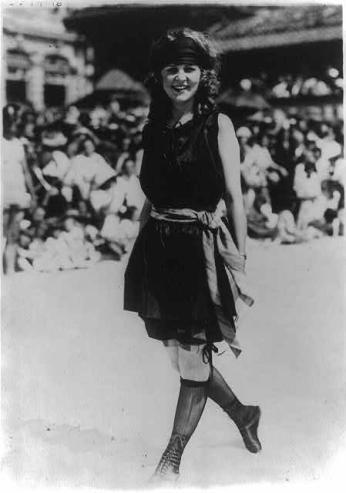
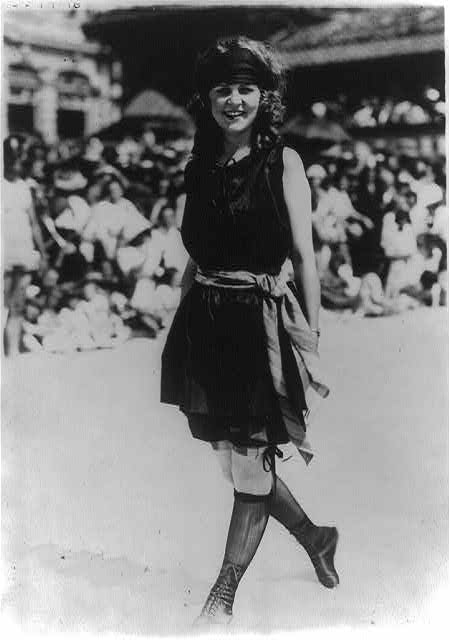
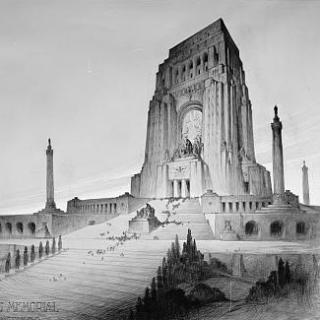
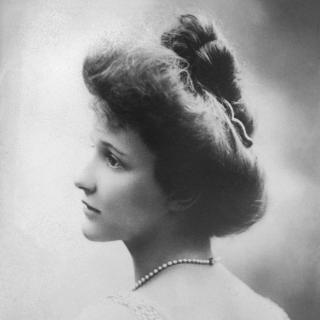
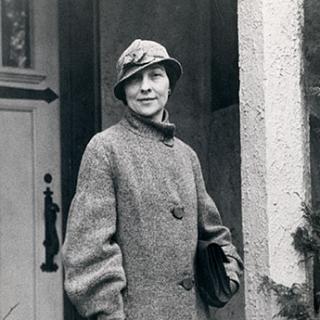
![Sketch of the mythical fuan by Pearson Scott Foresman. [Source: Wikipedia]](/sites/default/files/styles/crop_320x320/public/2023-10/Goatman_Wikipedia_Faun_2_%28PSF%29.png?h=64a074ff&itok=C9Qh-PE1)











